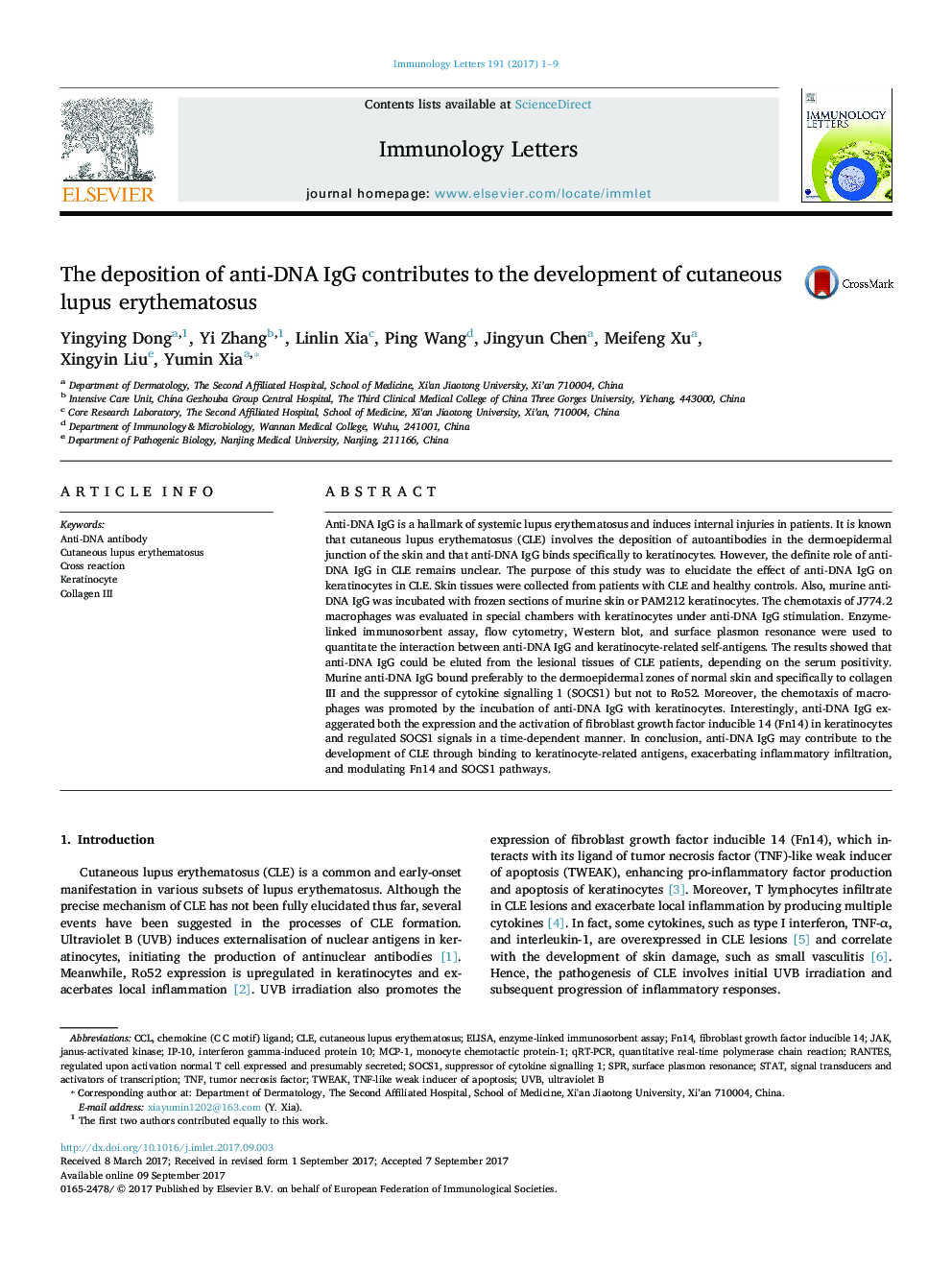| Article ID | Journal | Published Year | Pages | File Type |
|---|---|---|---|---|
| 5666645 | Immunology Letters | 2017 | 9 Pages |
â¢Anti-DNA IgG exists in skin lesion of lupus erythematosus and recognizes novel antigens.â¢Binding of anti-dsDNA IgG to keratinocytes induces macrophage chemoattraction.â¢Anti-dsDNA IgG amplifies effect of TWEAK/Fn14 activation on keratinocytes.â¢Anti-dsDNA IgG regulates SOCS1 signals in keratinocytes.
Anti-DNA IgG is a hallmark of systemic lupus erythematosus and induces internal injuries in patients. It is known that cutaneous lupus erythematosus (CLE) involves the deposition of autoantibodies in the dermoepidermal junction of the skin and that anti-DNA IgG binds specifically to keratinocytes. However, the definite role of anti-DNA IgG in CLE remains unclear. The purpose of this study was to elucidate the effect of anti-DNA IgG on keratinocytes in CLE. Skin tissues were collected from patients with CLE and healthy controls. Also, murine anti-DNA IgG was incubated with frozen sections of murine skin or PAM212 keratinocytes. The chemotaxis of J774.2 macrophages was evaluated in special chambers with keratinocytes under anti-DNA IgG stimulation. Enzyme-linked immunosorbent assay, flow cytometry, Western blot, and surface plasmon resonance were used to quantitate the interaction between anti-DNA IgG and keratinocyte-related self-antigens. The results showed that anti-DNA IgG could be eluted from the lesional tissues of CLE patients, depending on the serum positivity. Murine anti-DNA IgG bound preferably to the dermoepidermal zones of normal skin and specifically to collagen III and the suppressor of cytokine signalling 1 (SOCS1) but not to Ro52. Moreover, the chemotaxis of macrophages was promoted by the incubation of anti-DNA IgG with keratinocytes. Interestingly, anti-DNA IgG exaggerated both the expression and the activation of fibroblast growth factor inducible 14 (Fn14) in keratinocytes and regulated SOCS1 signals in a time-dependent manner. In conclusion, anti-DNA IgG may contribute to the development of CLE through binding to keratinocyte-related antigens, exacerbating inflammatory infiltration, and modulating Fn14 and SOCS1 pathways.
